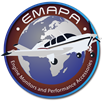It has been awhile since I have checked in and hope everyone is doing well. The F- 19 just came out of annual and I have a few small items to focus on over the next year to keep it looking good.
1) Does anyone have a good place to purchase some cowl bumps?
2) I will also be looking for some engine mount rubber over the next year. Any advice or contacts would be appreciated!
3) Does anyone run Vortex Generators on their airplane? I'm curious what you think of them. They work well on a Chief we have and I was seeking some feedback on the TC as well.
I know crammed a few questions in a single post and I hope that doesn't deter anyone.

1) Does anyone have a good place to purchase some cowl bumps?
2) I will also be looking for some engine mount rubber over the next year. Any advice or contacts would be appreciated!
3) Does anyone run Vortex Generators on their airplane? I'm curious what you think of them. They work well on a Chief we have and I was seeking some feedback on the TC as well.
I know crammed a few questions in a single post and I hope that doesn't deter anyone.


Comment